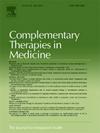有焦虑问题的青少年24小时运动指南遵守与社会功能和学习成绩的关系
IF 3.5
3区 医学
Q1 INTEGRATIVE & COMPLEMENTARY MEDICINE
引用次数: 0
摘要
目的:焦虑问题在儿童和青少年(被称为青少年)中普遍存在,通常会损害他们的社交和学业功能,而24小时运动(24-HBM)指南中概述的健康生活方式可能提供潜在的益处,但其具体关联仍有待研究。本研究旨在探讨美国6-17岁有焦虑问题的青少年24-HMB依从性与社会和学术功能之间的关系。方法:采用《2022-2023年全国儿童健康调查》的数据进行横断面研究,涉及3625名有焦虑问题的儿童和青少年。24-HBM指南包括每日中高强度体力活动(MVPA)持续时间至少60分钟,每日娱乐屏幕时间(ST)≤2小时,以及特定年龄的睡眠时间(SP)。通过统计分析来检验24-HBM依从性与社会功能(如交友困难、自我调节)和学术功能(如学校参与、留级)之间的关系。结果:只有5.7%的参与者完全遵守24-HBM指南。坚持一个或多个组成部分与更好的社交和学术功能有关:坚持体育活动(PA)指南对于减少结交/保持朋友的困难至关重要;遵守ST指导方针是提高学校参与度的关键。坚持联合指南(例如,PA+ST, PA+SP)显示出协同效应,完全坚持(PA +ST +SP)与较低的年级重复率和更好的自我调节有关。结论:促进24-HBM指南的遵守,特别是PA和ST成分,可能会改善这一独特群体的特定健康方面。未来应进行纵向研究以进一步验证研究结果。本文章由计算机程序翻译,如有差异,请以英文原文为准。
Associations of 24-hour movement guidelines adherence with social function and academic performance in youth with anxiety problems
Purpose
Anxiety problems are prevalent among children and adolescents (being referred as youth), often impairing their social and academic functioning, while healthy lifestyles as outlined in 24-hour movement (24-HBM) guidelines may offer potential benefits, yet their specific associations remain understudied. This study is to explore the associations between 24-HMB adherence and social and academic functioning in U.S. youth aged 6–17 years with anxiety problems.
Method
Data from the 2022–2023 National Survey of Children's Health was utilized in this cross-sectional study, involving 3625 children and adolescents with anxiety problems. 24-HBM guidelines include a daily moderate-to-vigorous physical activity (MVPA) duration of at least 60 min, daily recreational screen time (ST) of ≤ 2 h, and age-specific sleep duration (SP). Statistical analyses were conducted to examine the relationships between 24-HBM adherence and social functioning (e.g., difficulty keeping friends, self-regulation) and academic functioning (e.g., school engagement, grade repetition).
Results
Only 5.7 % of participants fully adhered to 24-HBM guidelines. Adhering to one or more components was associated with better social and academic functioning: physical activity (PA) guideline adherence was pivotal for reducing difficulties in making/keeping friends; ST guidline adherence was key for enhancing school engagement. Adherence to combined guidelines (e.g., PA+ST, PA+SP) showed synergistic effects, with full adherence (PA + ST +SP) linked to lower odds of grade repetition and better self-regulation.
Conclusion
Promoting 24-HBM guideline adherence, particularly PA and ST components, may enhance specific health aspects in this unique group. Future longitudinal studies should be conducted to further verify study findings.
求助全文
通过发布文献求助,成功后即可免费获取论文全文。
去求助
来源期刊

Complementary therapies in medicine
医学-全科医学与补充医学
CiteScore
8.60
自引率
2.80%
发文量
101
审稿时长
112 days
期刊介绍:
Complementary Therapies in Medicine is an international, peer-reviewed journal that has considerable appeal to anyone who seeks objective and critical information on complementary therapies or who wishes to deepen their understanding of these approaches. It will be of particular interest to healthcare practitioners including family practitioners, complementary therapists, nurses, and physiotherapists; to academics including social scientists and CAM researchers; to healthcare managers; and to patients. Complementary Therapies in Medicine aims to publish valid, relevant and rigorous research and serious discussion articles with the main purpose of improving healthcare.
 求助内容:
求助内容: 应助结果提醒方式:
应助结果提醒方式:


